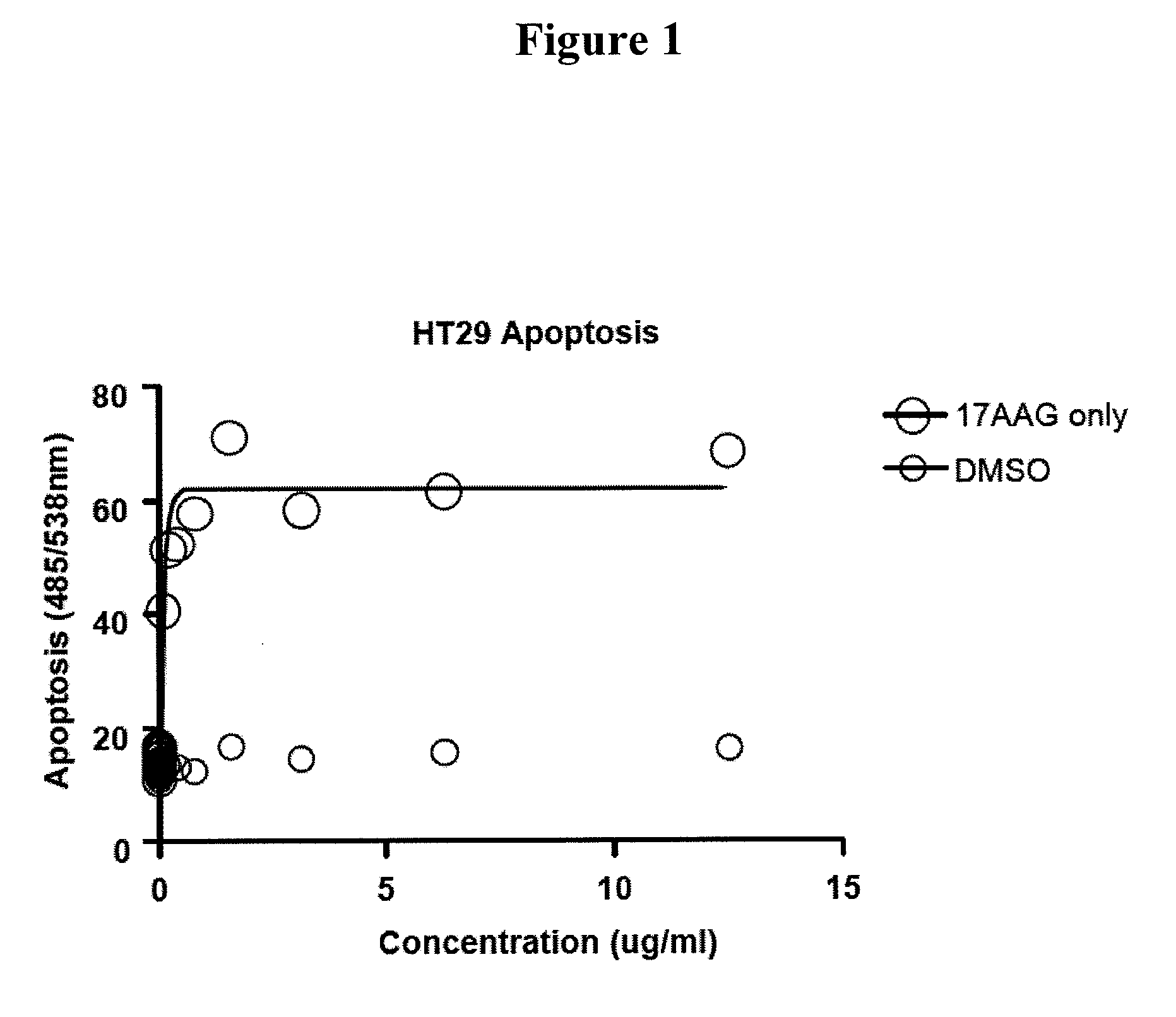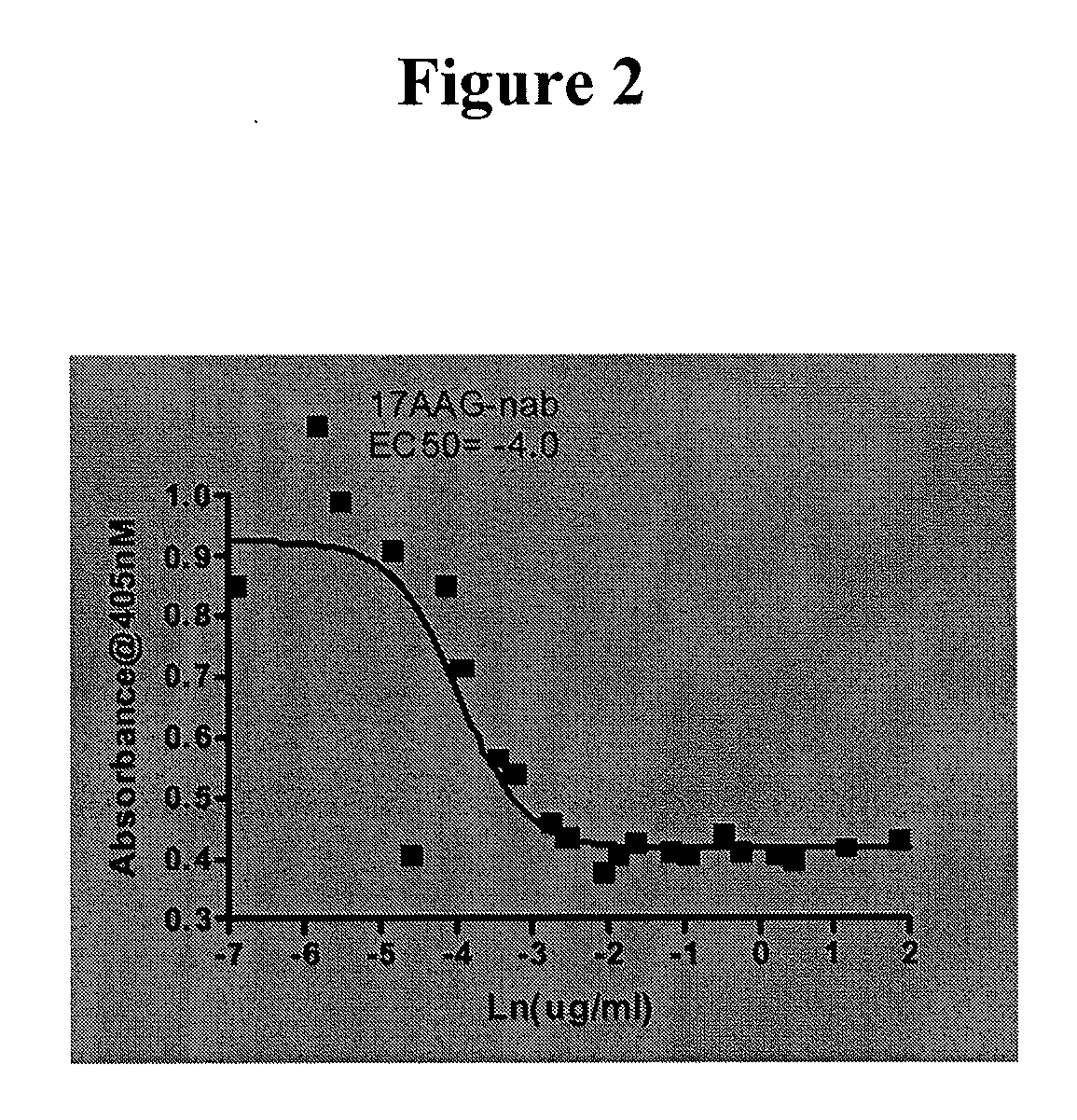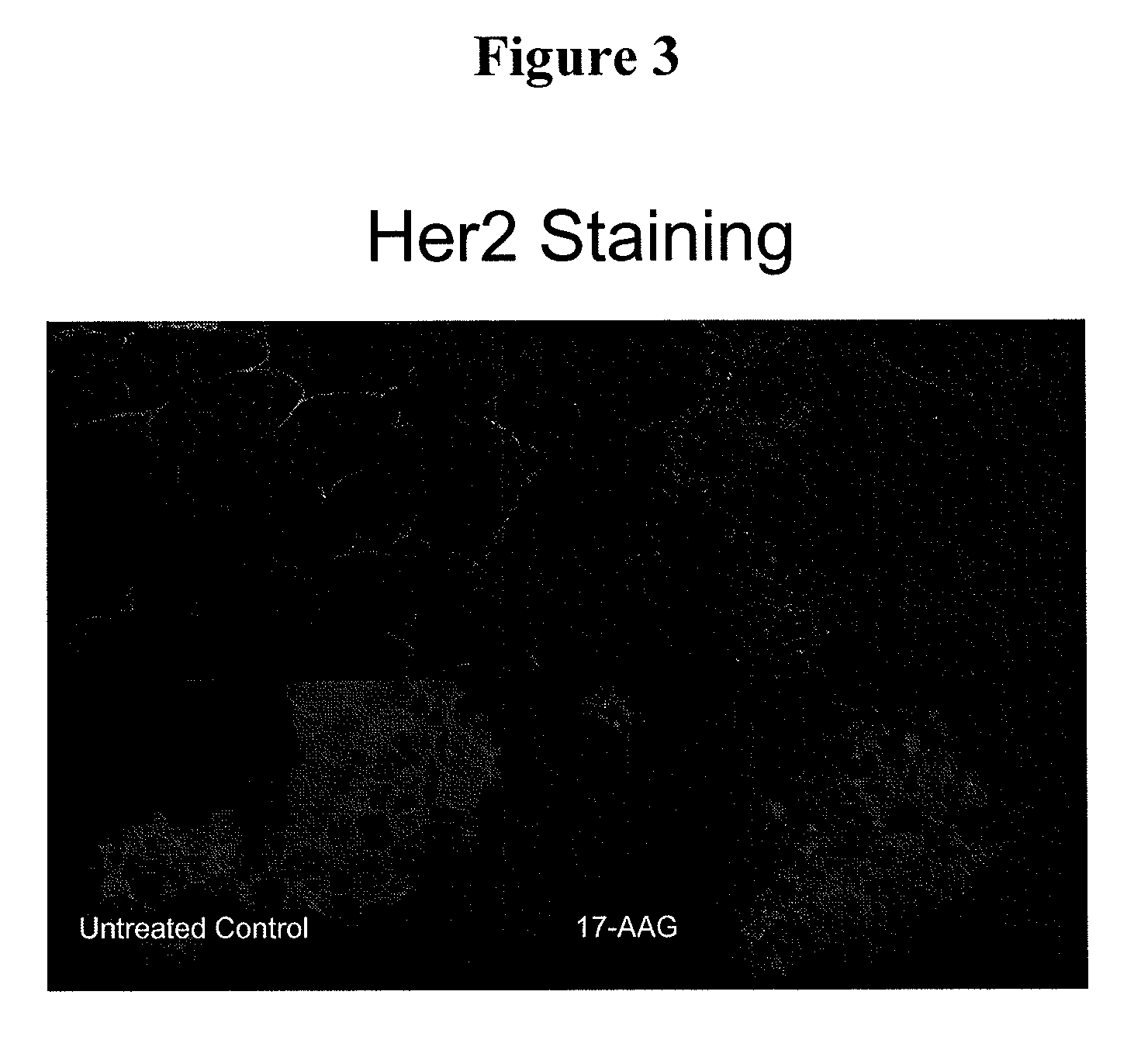Enhancement of drug therapy by mirna
a technology of mirna and drug therapy, applied in the field of enhancement of drug therapy by mirna, can solve the problems of dismal prognosis for the majority of patients diagnosed with cancer and unsatisfactory current chemotherapy, and achieve the effect of enhancing the activity of the hsp90 inhibitor 17-aag and enhancing the activity of a therapeutic agen
- Summary
- Abstract
- Description
- Claims
- Application Information
AI Technical Summary
Benefits of technology
Problems solved by technology
Method used
Image
Examples
example 1
[0166]This Example demonstrates the apoptotic activity of the HSP90 inhibitor 17-AAG.
[0167]The Apo-ONE® Homogeneous Caspase-3 / 7 Assay (Promega, Madison, Wis.) uses a proprietary lysis / activity buffer, in conjunction with the (Z-DEVD)2-Rhodamine 110 substrate, enables a simple “add-mix-read” format for the detection of caspase-3 and -7 in adherent, suspension, and primary culture cells, or in purified caspase preparations. The assay uses a rhodamine 110-based substrate allows for exquisite sensitivity previously unobtainable with conventional colorimetric or fluorometric assays.
[0168]Specifically, 100 μl of Apo-ONE® Caspase-3 / 7 Reagent was added to each well of a white or black 96-well plate containing 100 μl of blank, control or cells in culture. The plate was covered with a plate sealer for incubating for extended periods (>4 hours). In order to perform this assay in a 384-well plate, a 1:1 volume ratio of Apo-ONE® Caspase-3 / 7 Reagent to sample was used. The contents of wells were ...
example 2
[0170]This Example demonstrates the suppression of Her2 expression by the HSP90 inhibitor 17-AAG.
[0171]Ten thousand BT474 cells per well were seeded into a microtiter plate and grown for 48 hours. After this preincubation, the BT474 cells treated with various concentrations of 17-AAG and its analogs for 24-hours. At the end of this incubation the media was removed from each well, each well was washed twice with ice-cold Tris buffer saline (containing 0.1% Tween 20) and the cells were fixed with Methanol (ice-cold) at 40° C. for 10 minutes. The fixed BT474 cells were immunostained with anti-Her2 antibody. The presence of Her2 protein was determined by measurement of the absorbance at 405 nm in the plate reader.
[0172]As shown in FIG. 2, the IC50 of 17-AAG for Her2 suppression assay was closed to 32 nM. This result suggested that Her2 protein expression is strongly suppressed by 17-AAG.
example 3
[0173]This Example demonstrates that there is internalization and degradation of Her2 following inhibition of HSP90 by 17-AAG.
[0174]17-AAG treated BT474 cells were examined by the confocal images system. BT474 cells were seeded on the slide and treated at the concentration of IC50 for 24 hours. 17AAG-treated and control BT474 cells were fixed with Methanol, stained with Her2 antibody and analyzed by the confocal image. As shown in FIG. 3, the Her2 protein expression was eliminated from its cell surface sub-localization to cytoplasm after 17-AAG treatment.
PUM
| Property | Measurement | Unit |
|---|---|---|
| Tm | aaaaa | aaaaa |
| temperature | aaaaa | aaaaa |
| temperature | aaaaa | aaaaa |
Abstract
Description
Claims
Application Information
 Login to View More
Login to View More - R&D
- Intellectual Property
- Life Sciences
- Materials
- Tech Scout
- Unparalleled Data Quality
- Higher Quality Content
- 60% Fewer Hallucinations
Browse by: Latest US Patents, China's latest patents, Technical Efficacy Thesaurus, Application Domain, Technology Topic, Popular Technical Reports.
© 2025 PatSnap. All rights reserved.Legal|Privacy policy|Modern Slavery Act Transparency Statement|Sitemap|About US| Contact US: help@patsnap.com



